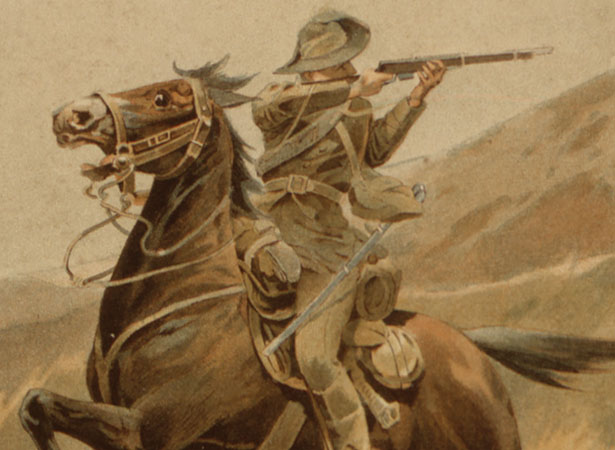
Premier Richard ‘King Dick’ Seddon asked Parliament to approve an offer to the British government of a contingent of mounted riflemen to serve in South Africa. Amid emotional scenes, the members overwhelmingly endorsed the motion – only five voted against it.
Seddon was an enthusiast for New Zealand’s participation in a war that had not yet begun. This would underline New Zealand’s loyalty to the British Empire. The premier exploited a wave of public patriotism to enhance his personal popularity. His eldest son, R.J.S. Seddon, served in two of the New Zealand contingents.
The authorities in London accepted New Zealand’s offer within days. Seddon proclaimed proudly that New Zealand’s had been the first legislature in the empire to offer assistance, overlooking the fact that five other colonies had done so in July.
Hundreds of men applied to serve in the contingent, membership of which was restricted to those already serving in New Zealand’s tiny regular force or the Volunteer Force. By the time fighting began on 11 October 1899, after a Boer ultimatum over the deployment of British troops in South Africa had been ignored by London, a 215-man contingent was encamped in the Wellington suburb of Karori. Meanwhile, the Defence Department frantically gathered together equipment and horses.
Ten days later, on 21 October, the contingent was given a tumultuous send-off from Wellington. A crowd of over 40,000 heard Seddon proclaim that New Zealanders ‘would fight for one flag, one Queen, one tongue, and for one country – Britain’.
Under the command of Major A.W. Robin, the contingent reached South Africa on 23 November, winning an ‘ocean race’ with Australian contingents across the Indian Ocean by several days. Despite having received only rudimentary training, the troops were immediately sent to join Lieutenant-General Sir John French’s Cavalry Division in northern Cape Colony. They had their first engagement with the enemy on 9 December. On 28 December Private George Bradford became the first New Zealand soldier to lose his life in an overseas conflict when he succumbed to wounds received at Jasfontein on the 18th.
Ultimately New Zealand sent nearly 6500 volunteers and 8000 horses to South Africa. In all, 71 members of the contingents were killed in action or died of wounds; 26 were accidentally killed, and 133 died of disease (more than half from typhoid fever).
Read more on NZHistory
Origins of the conflict – South African 'Boer' WarRichard SeddonNZ units in South Africa 1899-1902 – NZ units in South Africa 1899-1902South African War memorials – South African War memorialsHistory of New Zealand, 1769-1914 – A history of New Zealand 1769-1914
External links
How to cite this page
'New Zealand answers the empire's call to arms ', URL: https://nzhistory.govt.nz/page/nz-answers-empires-call-arms-south-africa, (Ministry for Culture and Heritage), updated 4-Sep-2020
